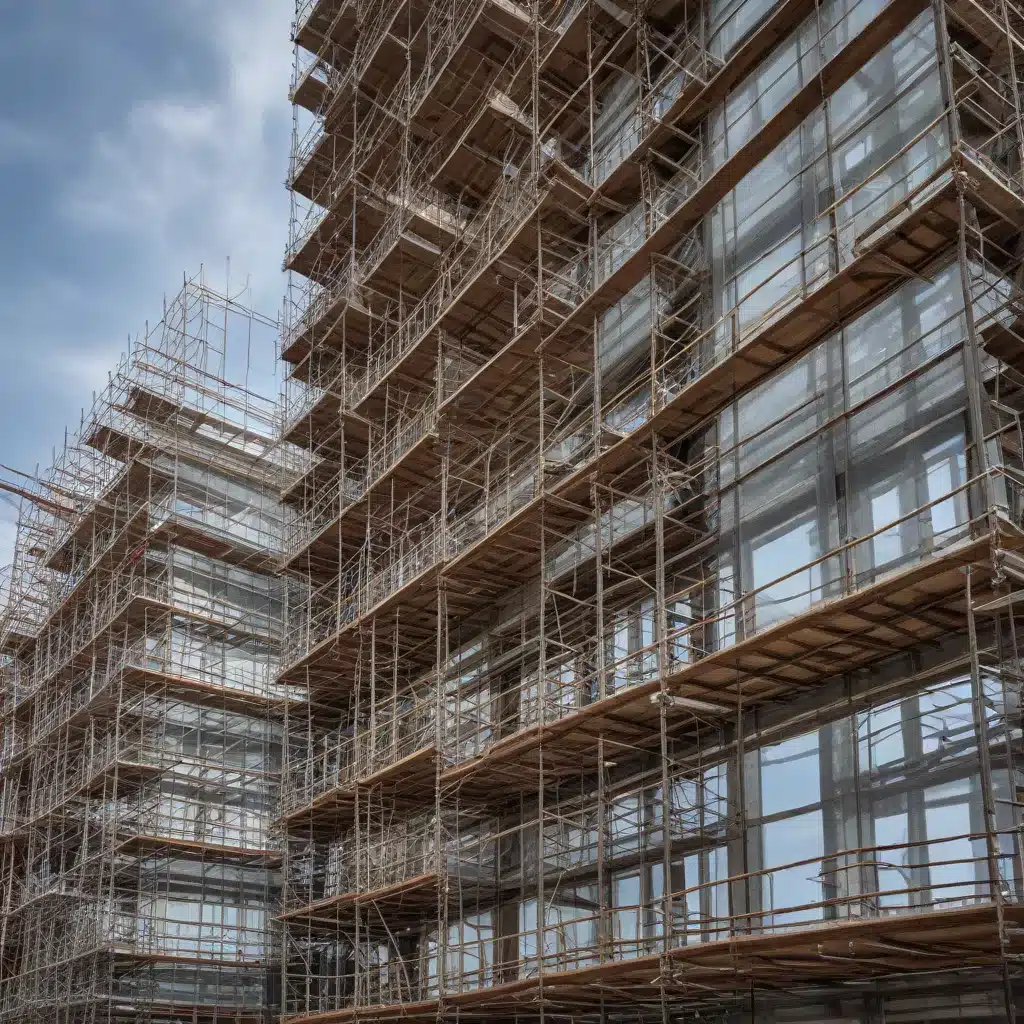
Navigating the Regulatory Landscape: Scaffolding Standards and Compliance in the UAE
The construction industry in the United Arab Emirates (UAE) is a bustling hub of activity, driven by ambitious development projects and a commitment to modernization. At the heart of this thriving sector lies the critical role of scaffolding – a fundamental component in ensuring the safety and efficiency of construction sites. As the UAE continues to evolve and set new standards for the built environment, understanding the regulatory landscape governing scaffolding is paramount.
The UAE has established a comprehensive set of guidelines and regulations to ensure the safety and integrity of scaffolding systems. The Ministry of Human Resources and Emiratisation (MOHRE) has spearheaded the development of these regulations, which outline the minimum requirements for design, installation, and maintenance of scaffolding structures. Compliance with these standards is not only a legal requirement but also a critical factor in safeguarding the well-being of construction workers and the public.
One of the key regulations governing scaffolding in the UAE is the UAE Code of Practice for Scaffolding. This document outlines the technical specifications, load-bearing capacities, and safety protocols that must be observed in the design and installation of scaffolding. Additionally, the UAE Construction Safety Regulations provide further guidance on the use of personal protective equipment (PPE), training requirements for workers, and the implementation of comprehensive safety management systems.
Ensuring compliance with these regulations is not only a legal obligation but also a strategic imperative for construction companies. Non-compliance can result in hefty fines, project delays, and, more importantly, the potential for catastrophic accidents. Proactive measures, such as engaging with qualified scaffolding providers, conducting thorough site assessments, and implementing comprehensive safety protocols, are essential to navigating the regulatory landscape successfully.
Innovative Scaffolding Solutions: Enhancing Safety and Efficiency
As the construction industry in the UAE continues to evolve, the demand for innovative scaffolding solutions has intensified. Conventional scaffolding systems, while effective, can often be labor-intensive, time-consuming, and susceptible to safety risks. In response, a new generation of scaffolding technologies has emerged, offering enhanced safety features, improved efficiency, and cost-effective benefits.
One such innovation is the use of modular scaffolding systems. These pre-engineered, interlocking components can be quickly assembled and disassembled, reducing the time and labor required for installation. Modular scaffolding systems also offer increased stability and load-bearing capacities, ensuring compliance with the UAE’s stringent safety regulations. Additionally, the use of lightweight, corrosion-resistant materials, such as aluminum, has made these systems more durable and easier to handle, further enhancing worker safety.
Another advancement in the UAE’s scaffolding landscape is the adoption of automated and semi-automated systems. These technologically-driven solutions leverage the power of hydraulics, pneumatics, and remote-controlled mechanisms to streamline the erection and dismantling of scaffolding structures. By minimizing manual labor, these systems significantly reduce the risk of human error and increase overall efficiency, ultimately contributing to a safer and more productive construction environment.
The introduction of Building Information Modeling (BIM) technology has also revolutionized the planning and design of scaffolding systems in the UAE. BIM-enabled software allows for the virtual simulation of scaffolding layouts, enabling construction professionals to identify and address potential issues before the actual installation. This proactive approach not only enhances safety but also optimizes resource utilization and minimizes project delays, leading to substantial cost savings.
Cost Management Strategies: Optimizing Scaffolding Expenditure in the UAE
As construction costs continue to rise in the UAE, construction companies are increasingly focused on implementing effective cost management strategies for scaffolding. While adhering to safety regulations and maintaining high-quality standards are non-negotiable, there are numerous approaches to optimize expenditure and maximize the return on investment.
One key strategy is the implementation of rental-based scaffolding solutions. Instead of acquiring scaffolding equipment outright, construction firms can opt for short-term or long-term rental arrangements. This approach helps to minimize the upfront capital investment and provides greater flexibility in adapting to project-specific needs. Rental providers in the UAE typically offer comprehensive maintenance and repair services, further reducing the overhead costs associated with ownership.
Another cost-saving measure is the adoption of modular scaffolding systems, as mentioned earlier. These standardized components can be easily reconfigured and reused across multiple projects, reducing the need for new acquisitions and minimizing disposal costs. Additionally, the reduced installation and dismantling times associated with modular systems can lead to significant labor cost savings.
When considering the overall cost of scaffolding, it is essential to factor in the expenses related to safety equipment, training, and maintenance. Investing in high-quality personal protective equipment (PPE) and providing comprehensive training for workers can help to mitigate the risk of accidents and the associated costs. Furthermore, regular inspections and proactive maintenance of scaffolding structures can extend their lifespan, leading to long-term cost savings.
To further optimize scaffolding expenditure, construction companies in the UAE are exploring collaborative procurement strategies. By pooling resources and negotiating collective contracts with scaffolding providers, firms can leverage their collective bargaining power to secure more favorable pricing and terms, ultimately reducing the per-project cost of scaffolding.
Conclusion
As the construction industry in the UAE continues to thrive, the role of scaffolding in ensuring safety, efficiency, and cost-effectiveness has become increasingly crucial. By navigating the regulatory landscape, embracing innovative scaffolding solutions, and implementing strategic cost management practices, construction professionals in the UAE can enhance their projects’ overall performance and contribute to the growth of the nation’s built environment.
At Sher Ahmed Scaffolding, we are dedicated to providing comprehensive scaffolding services that meet the highest safety standards and deliver unparalleled value to our clients in the UAE. Our team of experts is well-versed in the local regulations, experienced in the deployment of cutting-edge scaffolding technologies, and committed to optimizing cost structures to meet the unique needs of each construction project. By partnering with Sher Ahmed Scaffolding, construction professionals in the UAE can streamline their scaffolding operations, focus on their core competencies, and contribute to the realization of the nation’s ambitious development goals.
